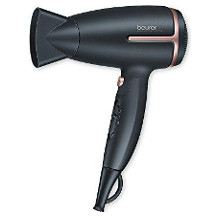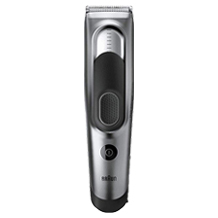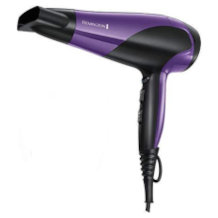Hair straightener purchasing advice: how to choose the right product
- What You Need to Know
- With the right straightener, you can style the hottest trend hairstyles – from sleek looks to beach waves and curly manes.
- To avoid hair breakage or even permanent damage to the hair structure, users should only use straighteners with ceramic or titanium plates.
- Innovative technologies prevent electrostatically charged hair and even provide moisture and shine.
- Safety first: In addition to overheating protection, straighteners should also have an automatic switch-off as well as a locking function and a heat-resistant cover.
A dream hairstyle in no time at all
If you not only want to tame unruly or curly hair, but also turn it into a silky, shiny mane in no time at all, a straightening iron is the right styling tool. With this all-rounder, a hairdo à la Struwwelpeter can be styled into a sleek look even without a visit to the hairdresser. But that’s not all – a straightener can even replace a curling iron and create elegant waves as well as ringlets.
The first hair straighteners were developed at the end of the 19th century and worked in the same way as their modern electric counterparts: after users had heated the two tong-like metal rods over a fire or candle, they clamped individual strands between them and pulled them through to the tip. But the hair straighteners of the time were dangerous: burns to the scalp and irreversible damage to the hair occurred time and again. Today, straightening irons are generally considered safe. Nevertheless, caution is advised: Inferior models can also cause damage to health with long-term use. It is therefore very important to pay attention to the quality of the appliance.
Consumers should choose a straightener that is gentle on the hair and does not stress it. Those who also want to use their hair straightener as a curling iron should even pay double attention to good quality. How well the appliance straightens or curls the hair is by no means the only quality criterion. Among other things, the degree of static charge as well as the shine, combability and dryness after use are also important.
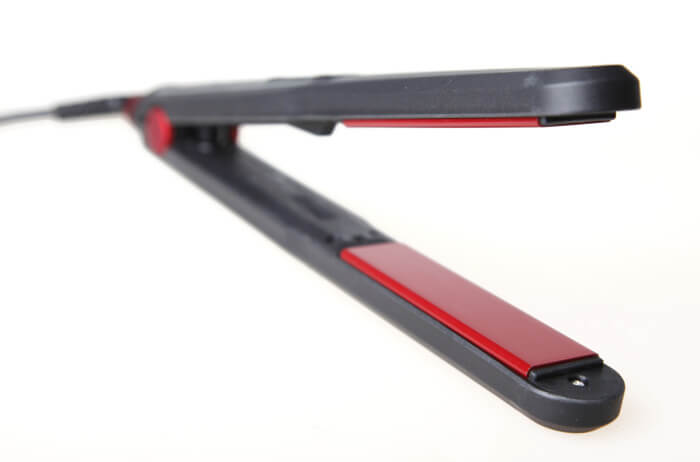
The right straightener for every hair type
Whether you have frizzy hair and want straight instead or vice versa – there is an ideal model for every need among the different types of straighteners. From the different plate coatings to the latest technologies to the straightening brush: below we present the different basic types and explain what certain hair types need to pay special attention to.
Metal, ceramic or even titanium?
First of all, interested people have to choose between different materials, because in addition to metal plates, there are also ceramic and titanium plates. Older and cheaper models in particular often have metal plates that damage the hair much more than ceramic models. Since metal heating plates – regardless of whether they are coated with ceramic or not – expand and therefore cannot generate a constant, homogeneously distributed heat, they occasionally exceed the recommended maximum temperature and thus damage the hair structure. In the worst case, the hair sticks to the metal plates and breaks off or burns.
All-ceramic and titanium plates, on the other hand, provide a balanced heat distribution so that users can straighten their hair gently. Ceramic straighteners are not only particularly smooth, but also highly scratch-resistant, which makes them less susceptible to wear. Although the hair glides smoothly through a titanium straightener with equally smooth plate surfaces, the iron becomes so hot within a very short time that only users with a great deal of experience can safely handle such a device.
The technologies
Straightener manufacturers are constantly developing new technologies with which they want to hold their own in the market. However, the classic technology is and remains the application of heat. All other technologies, be it ions, infrared or steam, are merely add-ons that make styling gentler. A special case is refrigeration technology, which not only does not require heat, but also electricity.

Ions
When the positively charged particles in the air and in the hair meet, they repel each other, causing the hair to stand out. Ion technology bombards the hair with negatively charged particles that neutralise the hair. The ions distributed on the hair provide moisture, which they take from the air. In this way, the hair does not become electrostatically charged, but instead appears shinier than before.
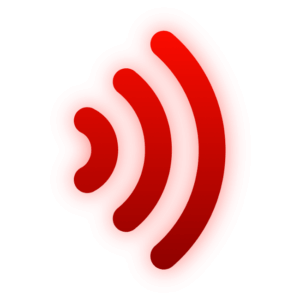
Infrared
Unlike classic straighteners, appliances with infrared technology do not heat the hair from the outside in, but from the inside out. The heat quickly finds its way to the core of the hair. Hair straighteners equipped with infrared technology therefore do not get as hot as other models. Consequently, they do not dry out the hair.
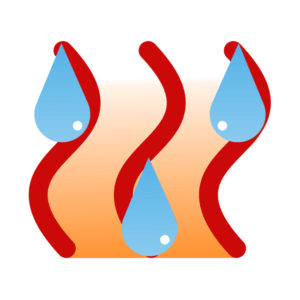
Steam
Steam straighteners emit hot water vapour while in use, which not only makes the hair smoother, but also smoother. This technology is gentler because the heat input does not have to be as high as with conventional straighteners due to the hot steam. This means less damage to the hair. In addition, the result lasts longer. However, these devices have one disadvantage: users cannot curl their hair with them.

Cold
Those who do not want to put too much strain on their hair can resort to the alternative cold technology. Users place individual strands of hair between the ice-cooled, magnetic plates. Due to the cold, the straightener transports moisture into the hair and locks it in. Since it works without electricity, it is not only practical but also cheaper in the long run than a conventional hair straightener. At the moment, however, this innovative technology is still rare on the German market.
Which temperature is ideal for which hair?
It is essential that the temperature remains even and constant. Straighteners with even-heat technology prevent temperature fluctuations that damage the hair. For thin hair, consumers should only heat the appliance between 80 and 140 degrees; for medium-thick hair, the heat level can also be between 140 and 160 degrees, whereas thick (hard, rather wiry) hair can tolerate a heat between 160 and 185 degrees. Temperature control is either automatic, or users can manually set their desired heat level. For the best possible temperature control, consumers should rely on the device’s sensors. These detect the hair structure and regulate the heat accordingly.
It is important that the heating plates never exceed the 200 degree limit. Temperatures above 200 degrees would massively affect the hair structure and thus permanently damage the hair.
From 0 to 100 in a few seconds
Especially if you have to do it quickly, for example in the morning before work or the evening before a party, the warm-up time should be less than 60 seconds. Some straighteners heat up to the maximum setting in just a few seconds. Standard is about 30 seconds. A quick-heat, temperature-boost or turbo function allows the temperature to climb to the maximum level within a very short time, so that the hair straightener is ready for use immediately.
With rechargeable battery or cable?
Practical models with rechargeable batteries are particularly recommended for travelling, as they can be used independently of power sockets. With such straighteners, consumers need to pay attention to the battery power, as hair straighteners generally require a lot of energy to generate heat. Battery-powered appliances are usually smaller and therefore not suitable for curly manes or long hair. However, their compact size makes them suitable for any handbag for straightening hair on the go. It usually takes 60 to 90 minutes to fully recharge the battery, after which users can use the straightener for up to 30 minutes. The temperature reaches up to 180 degrees so that the hair is not stressed too much.
Caution, heat damage!
When using a cordless straightener on the go, never forget the heat-resistant case or protective cap to avoid burns in your handbag.
The brush under the iron
An alternative to straightening irons are the so-called straightening brushes. Although they are less well-known, they serve exactly the same purpose – at least when it comes to straightening the hair, because curls are not possible with them. With the help of hot bristles, users comb their hair until it is smooth and soft. In addition to an even distribution of heat, they have another advantage: consumers find it easier to reach every strand of hair, even at the back of the head, which reduces the risk of burns.
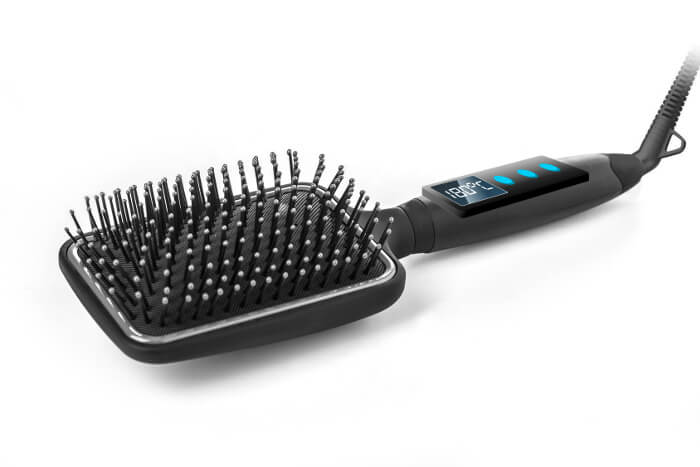
There are four different types of straightening brushes on the market:
- Multifunctional straightening brushes: They are suitable for any hair length, almost any hair type and for both wet and dry hair.
- Straightening brushes with ceramic bristles: The ceramic part optimises the heat distribution, prevents electrostatic charging and ensures shiny hair.
- Straightening brushes with ionic technology: With the help of ions, users not only prevent frizz, but also give their hair a silky shine.
- Hot air brushes: These are a mixture of a hair dryer and a (round) brush. Their main purpose is to dry the hair.
What to look for when buying
Straighteners now have a variety of features that usually mean little or nothing to buyers. In the following, we explain the most important buying factors such as the dimensions and shape of the heating plates as well as some features that contribute to safety, comfortable handling and protection of the hair.
How big should the straightener be?
Straighteners come in a wide variety of colours and some are even adorned with decorative elements such as glitter stones. However, customers should of course not make their purchase decision dependent on the appearance of the appliance. First of all, they have to decide on a certain size of appliance. The optimal length and width of the plates depends on the hair length, hair thickness and intended use. If users mainly use their straightener on the go or have a short hair style, a smaller straightener is the right choice. For longer hair or use at home, on the other hand, a larger device is recommended. Basically, any straightener should be light and handy so that it fits comfortably in the hand.
The heating plates: Rounded and movable
Heating plates that are rounded at the edges are particularly suitable for styling curls and waves, as they make it much easier to twist them in and also glide more comfortably through the hair. This makes it possible to shape both inwardly and outwardly curled strands of hair. Optimising the pony is also effortless with rounded edges. There are hardly any limits to creativity.
Spring-loaded heating plates ensure excellent heat distribution through even pressure, so that users do not overstress their hair in places. The hair is not subjected to excessive tension and is thus protected from possible damage, such as hair breakage. Thanks to their mobility, the plates adapt perfectly to the strands of hair and give the curls the necessary bounce.
Dangerous? The safety precautions
Safety seals such as TÜV or GS guarantee that the appliance has no safety defects and will not cause any damage to health if used correctly. An automatic switch-off is an absolute must for modern straighteners. Appliances equipped with a sleep mode switch off automatically after a longer rest period – usually between 30 and 60 minutes – to avoid a fire hazard. Should users forget to disconnect the hair straightener from the mains after use in a hectic moment, the mechanism provides an additional measure of safety.
The transport lock or button lock prevents users from accidentally adjusting the selected temperature while styling. It also ensures that the appliance does not turn on by itself – for example, when being transported in a bag – which could cause damage to the ceramic surfaces. In addition, an overheating protection should be provided so that the hair does not burn. This ensures that the appliance switches off automatically before it gets too hot.
With a heat-insulated Cool-Touch tip, users can use both hands for straightening without getting burned. This is because the tip stays cool even during prolonged use. This gives users maximum control, which comes in handy when twisting in curls, for example, as they pull the tool through the hair strand by strand.
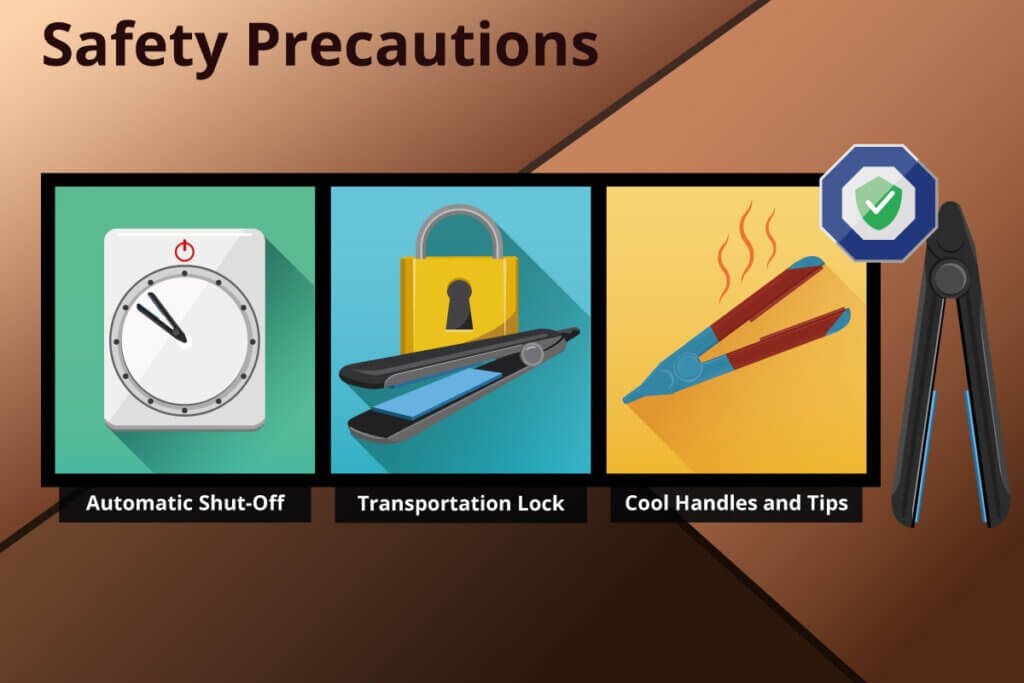
What is important in handling?
When it comes to handling, users should pay attention to grip and slip resistance. In addition, the outer casing must not heat up so much during straightening that consumers can burn themselves on it. If the hair feels brittle and dull after straightening, either the hair structure is not suitable for such heat stress or the straightener is not fulfilling its purpose properly. If the latter is the case, the user must of course do without his hair straightener.
The (LC) display shows the selected temperature. It should be as large as possible and easy to read. If there is no display, the hair straightener must at least have an (LED) operating indicator light that informs users about the current temperature of the plates. The memory function stores the last selected temperature. In some cases, users can also create profiles for different (usually up to three) people in the household. This allows several users to conveniently select their personal temperature settings.
A cable joint that can be rotated 360 degrees brings additional comfort of use, as it provides more freedom of movement. This allows users to comfortably style their hair at any angle without causing tangles. The cable should be at least two to three metres long.
The protection technologies: Color-Save and Moisture-Protect
Due to the chemical treatment, coloured hair is often porous and shows split ends. Accordingly, they require special care. Only low heat levels are suitable for them. Straighteners with a special colour-protection technology, also known as colour-save technology, which automatically adjust to the appropriate temperature for the respective hair type, are perfect. Thanks to their gentle treatment, they protect the hair from colour fading and moisture loss. They also glide through the hair particularly gently.
In the meantime, straighteners with so-called Moisture-Protect-Technology are also available on the market, which not only protect the hair’s moisture, but even slightly increase it. An integrated sensor analyses the hair 30 times per second and adjusts the temperature accordingly to preserve the hair’s natural moisture content and protect the hair from overheating. In addition, the heating element ensures even heat distribution.
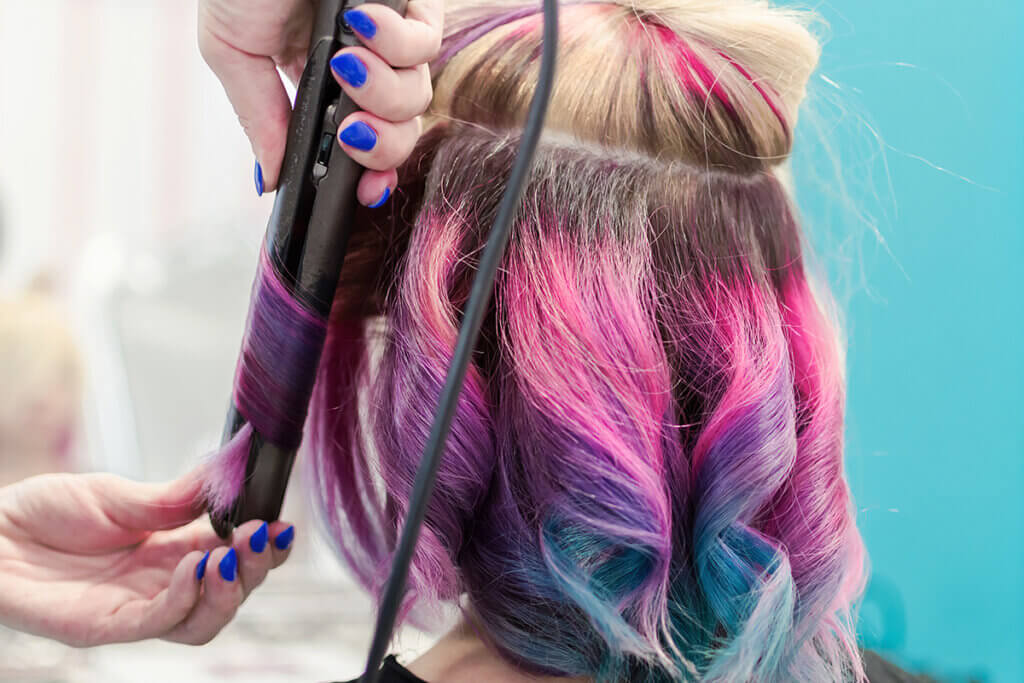
Features: A question of price
The cost of a hair straightener ranges from 14 to 300 euros; those interested have to spend considerably more money for good quality. Inexpensive appliances often do not straighten as well and do not have the same safety features. Buyers should therefore invest at least 50 euros, and even 150 euros for more comfort and longer durability. Accessories such as a carrying bag, a heat pad, a suspension eye or a plate protection cap are of course also welcome in this price category.
Styling tips from straight to curly
As long as users moisturise their hair, there is nothing wrong with using the hot iron once or twice a week. Otherwise, hair breakage or even permanent damage to the hair may occur. For a gentle treatment of the hair, interested persons should adhere to the following tips:
- If you have dry or damaged hair, it is best not to use the straightening iron at all.
- The hair should be freshly washed, but as dry as possible and free from residues of the care products used.
- Before straightening, users should use a protective lotion and a heat-protective spray, be it a mousse, spray or fluid, to avoid brittle hair.
- First, users divide their hair into several sections and then work through them one after the other. Then they pull one strand at a time through the straightener from the underhair to the tips of the top hair.
- The movement should always be smooth and the straightener should not be left in one place for too long.
- By pulling a slight arc, users prevent protruding tips and bring a slight roundness to the hair.
- The straightener can also be used to determine the direction in which the hair should fall. To create more hair volume, users lift their hair at a 90-degree angle. For the sleek look, hold the straightener close to the head while pulling the strands through.
- To protect the hair, consumers should never heat the straightener to more than 200 degrees; for coloured or damaged hair, the maximum should be 180 degrees. They should also take breaks during straightening.
- After use, consumers should allow the iron to cool on a heat-resistant surface for at least ten minutes.
- After using the straightener, it is advisable to set the hairstyle with styling products such as hairspray, so that it will last in wind and weather.
Care tip
Clean the straightener with a damp microfibre cloth after use, as residues of care products as well as bacteria build up on it. Let the iron cool down before cleaning and do not use aggressive cleaning agents. Ceramic plates are particularly easy to clean.
From beach waves to ringlets
The situation is different when curling the hair. In this case, users hold the iron at a 360-degree angle around the longitudinal axis and slowly pull the individual strands to the tips. You can use the straightener to style trendy beach waves, for example. Shaping curls with a straightener seems contradictory at first glance, as a straightener was invented for the opposite purpose, namely to straighten hair. Nevertheless, fewer and fewer consumers are turning to curling irons to curl their hair, and more and more are turning to straightening irons instead. Those who like variety on their head are well advised to use a straightening iron. Users can use it to style a wide variety of hairstyles.
Not every straightening iron is recommended for curling hair. In addition to the shape of the heating plates, their dimensions must also be suitable. The appliance must be neither flat nor wide. Ideally, it should have a semi-circular top and bottom, the latter also being hot. Visually and functionally, it then resembles a curling iron. Rounded heating plates simplify the process and enable gentle and even curling.
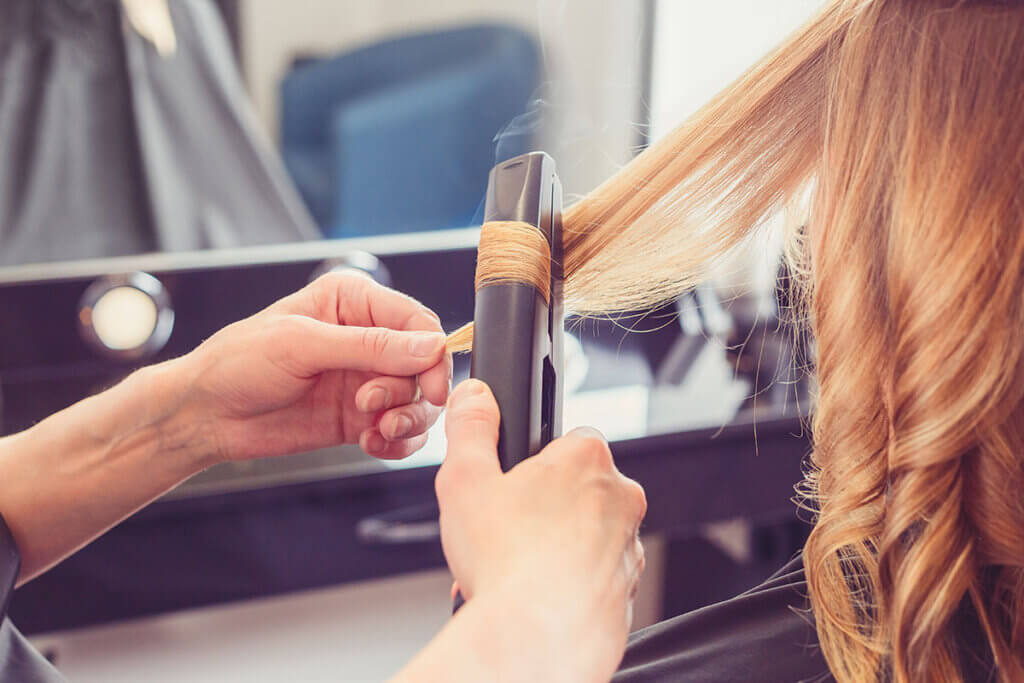
The diameter should be between 25 and 50 millimetres, depending on the length and thickness of the hair. For short haircuts, the hair must be at least twice as long as the circumference of the straightening iron so that it does not become frizzy. Ceramic plates are recommended for wave styling because they heat up evenly and constantly.
This is how you curl your hair step by step:
- First comb your hair and divide it into individual sections to keep track and bring structure to the hairstyle. The result will not be even if you curl too much hair at once.
- For longer hairstyles like long bobs, users massage some beach wave foam into the hair or spray it with a salt spray. Then the hair straightener is used.
- Starting with the lowest layer of hair, take a strand from the nape of the neck and work your way along the ears.
- Take a thinner strand for corkscrew curls or a thicker strand for big waves; place the iron at the hairline, turn it 180 degrees so that the strand is wrapped around the barrel, then pull it slowly and evenly to the ends of the hair.
- For defined curls, wrap the strand briefly around your finger. Before moving on to the next section, spray some hairspray on the finished curled strand to set it.
- Gather the curls with a hair clip to separate them from the rest of the hair. Do the same with all the other sections until all the hair is curled.
Short hairstyles: Pixie Cut, Bob and Co.
Short hairstyles can also be styled with a straightening iron. Narrower straighteners are better suited for this purpose, as they allow users to start just above the scalp and comfortably pull the short strands through to the tip. For pixies, the plates should be between one and one-and-a-half centimetres wide, for bobs about two-and-a-half centimetres wide and for medium-length hair about three centimetres wide. Women and men with short hairstyles, such as a bob, can use the straightening iron more often, as they regularly have the stressed tips cut off when they visit the hairdresser.

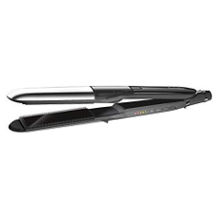
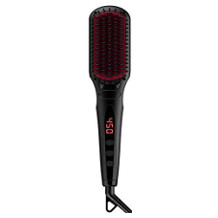
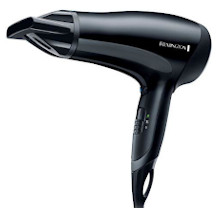
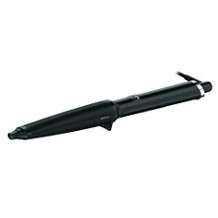
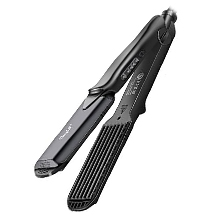
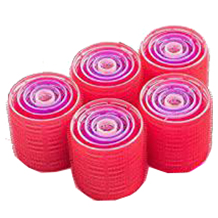
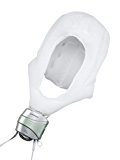
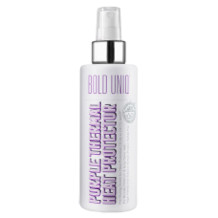

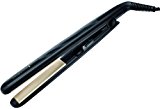
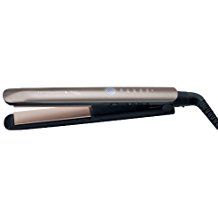
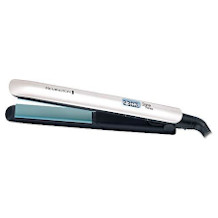


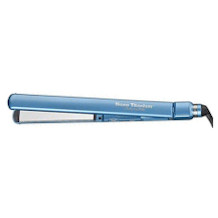
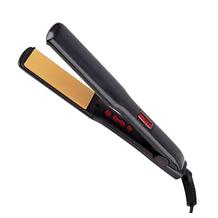
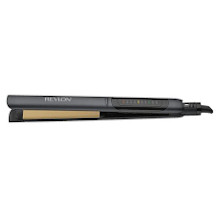
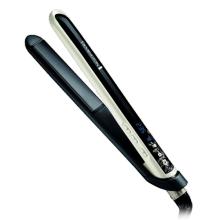
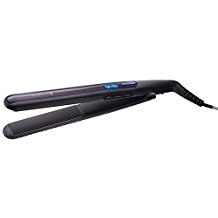
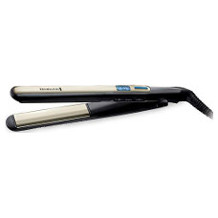

 64,456 reviews
64,456 reviews
